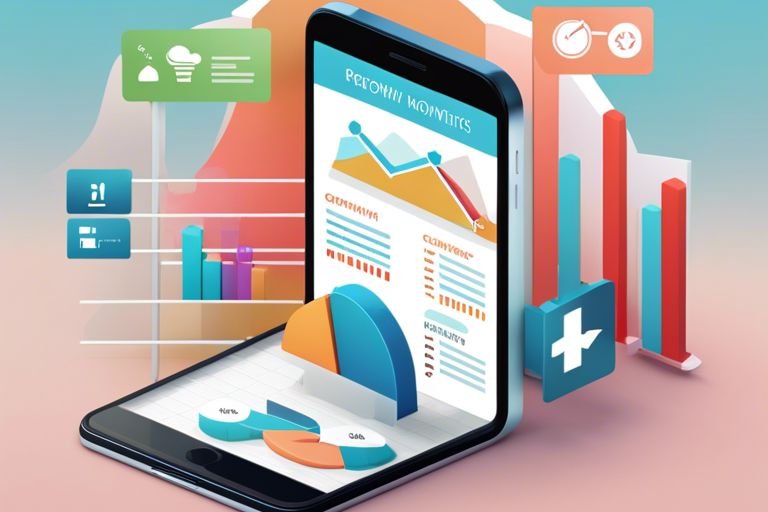Over the years, data-driven marketing has revolutionized the way businesses connect with their target audience. By leveraging data analytics and insights, companies can make informed decisions that increase conversions and drive revenue. In this blog post, we will research into effective strategies that an agency can employ to optimize their marketing efforts and boost conversion rates. From personalized marketing campaigns to targeted messaging, these data-driven tips are necessary for any agency looking to maximize their ROI and engage their audience on a deeper level.
Key Takeaways:
- Implement A/B Testing: Test different variations of your marketing campaigns to identify what resonates best with your audience and drives higher conversion rates.
- Personalize Your Messaging: Tailor your content to match the interests and needs of your target customers, increasing the chances of engaging them and converting leads into sales.
- Optimize User Experience: Ensure your website and landing pages are user-friendly, easy to navigate, and load quickly to provide a seamless experience that encourages visitors to take action.
Understanding Your Audience
Collecting Customer Data
For successful data-driven marketing, you must first understand your audience. Start by collecting important customer data such as demographics, behavior patterns, preferences, and past interactions with your brand. This information forms the foundation for creating personalized and targeted marketing campaigns that resonate with your audience.
Analyzing Customer Behavior
Behavior analysis is crucial for optimizing your marketing strategies. By tracking customer behavior on your website, social media platforms, emails, and other channels, you can gain valuable insights into what drives conversions. Identifying patterns and trends in customer behavior allows you to tailor your messaging and offers to increase engagement and ultimately, conversions.
Plus, analyzing customer behavior helps you forecast future trends and anticipate market shifts, giving your agency a competitive edge. By leveraging tools like Google Analytics, heat maps, and CRM data, you can uncover hidden opportunities and address pain points in the customer journey to improve overall conversion rates.Stay vigilant in monitoring and interpreting customer behavior data to continuously optimize your marketing efforts and stay ahead of the curve.
Enhancing User Experience
Website Optimization
Some of the most effective ways to enhance user experience and increase conversions on your website involve optimization. Ensure your website loads quickly, is mobile-responsive, and has clear navigation to make it easy for visitors to find what they are looking for. Conduct A/B testing to optimize your website layout, content, and calls-to-action for maximum impact.
Personalized Content Strategies
Some personalized content strategies can significantly improve user engagement and conversions. To create personalized experiences, utilize data analytics to understand your audience better and tailor content to their preferences and behaviors. Implement dynamic content that changes based on user interactions, personalized recommendations, and targeted email campaigns to drive conversions effectively.
Enhancing user experience through personalized content strategies can lead to higher conversion rates and improved customer satisfaction. By delivering content that resonates with individual users, you can build stronger relationships and loyalty with your audience. Additionally, leveraging data-driven insights to personalize user experiences demonstrates your commitment to meeting their needs and preferences.
Conversion Optimization Techniques
A/B Testing and Data Analysis
For effective conversion optimization, A/B testing and data analysis play a crucial role. By conducting A/B tests on different elements of your website or marketing materials, you can gather valuable insights on what resonates best with your audience. Analyzing the data from these tests will help you make informed decisions to optimize your conversion rates.
Call-to-Action Improvements
One key aspect of increasing conversions is enhancing your call-to-action (CTA) strategies. A well-crafted CTA can significantly impact the actions your audience takes on your website. By making clear, eye-catching CTAs that clearly communicate the value proposition and encourage action, you can drive more conversions and achieve your marketing goals.
The success of your conversion optimization efforts heavily relies on the effectiveness of your CTAs. Testing different CTA variations, such as colors, wording, and placement, can help you identify what works best for your audience. Remember to keep your CTAs concise, compelling, and action-oriented to maximize their impact on conversions.
Leveraging Retargeting Campaigns
Fundamentals of Retargeting
After a user visits your website, they can easily get distracted and leave without converting. Retargeting allows you to show ads to these visitors as they browse other websites or social media platforms, keeping your brand top of mind and encouraging them to return and complete the desired action.
Best Practices for Retargeting Ads
One of the key best practices for retargeting ads is to create specific audience segments based on their behavior on your website. This could include visitors who abandoned their shopping carts, those who viewed certain product pages, or customers who have made a purchase in the past. By segmenting your audience, you can personalize your ads and messaging to better resonate with each group.
To further optimize your retargeting campaigns, make sure to rotate your ad creatives regularly to prevent ad fatigue and test different ad formats and placements to see what works best for your audience. Additionally, use strong call-to-actions in your ads to drive users back to your website and track and analyze the performance of your campaigns to make data-driven adjustments.
Measuring and Refining Strategies
Many businesses invest a significant amount of time and resources into data-driven marketing strategies to increase conversions. By measuring the effectiveness of these strategies, agencies can refine their approaches to achieve even better results. If you want to examine deeper into this topic, check out Data-Driven Marketing – Your Way Towards Higher Conversions.
Key Performance Indicators (KPIs)
Performance metrics are crucial for evaluating the success of your data-driven marketing efforts. Key Performance Indicators (KPIs) such as conversion rate, click-through rate, and customer acquisition cost help agencies track and analyze the impact of their strategies. By focusing on these metrics, businesses can identify areas for improvement and optimize their campaigns for higher conversions.
Continuous Improvement Through Data
With the vast amount of data available today, businesses have the opportunity to continuously improve their marketing strategies. By analyzing customer behavior, engagement metrics, and campaign performance, agencies can make data-driven decisions to refine their approaches. This iterative process of testing, analyzing, and optimizing allows businesses to stay ahead of the competition and drive better results.
Refining marketing strategies through data-driven insights is crucial for maximizing conversions. By leveraging KPIs and continuously analyzing data, agencies can make informed decisions that lead to more effective marketing campaigns. This commitment to improvement fosters a culture of innovation and success in the ever-evolving digital marketing landscape.

To wrap up
Presently, implementing data-driven marketing strategies is vital for businesses looking to increase conversions. By following the agency’s tips on analyzing customer data, personalizing content, leveraging automation, and testing and optimizing campaigns, companies can significantly boost their conversion rates and drive more revenue. It is crucial for businesses to continuously adapt and refine their marketing approaches based on data insights to stay ahead in today’s competitive landscape. By prioritizing data-driven decision-making, businesses can better understand their customers, tailor their marketing efforts accordingly, and ultimately achieve higher conversion rates and business growth.
FAQ
Q: What is Data-Driven Marketing?
A: Data-driven marketing is a strategy that utilizes data analysis and insights to make informed decisions about targeting, messaging, and channel selection for marketing campaigns. By leveraging data, marketers can better understand their audience, personalize content, and optimize marketing efforts for improved results.
Q: Why is Data-Driven Marketing important for increasing conversions?
A: Data-driven marketing is crucial for increasing conversions because it allows marketers to target the right audience with the right message at the right time. By analyzing data, marketers can identify patterns, trends, and preferences that help tailor marketing strategies for maximum impact. This personalized approach leads to higher engagement, trust, and ultimately more conversions.
Q: What are some tips for implementing Data-Driven Marketing to increase conversions?
A: Here are some tips for using data-driven marketing to boost conversions:
- Collect relevant data from various sources such as website analytics, social media insights, and customer surveys.
- Segment your audience based on demographics, behaviors, and preferences to deliver personalized content.
- Use A/B testing to experiment with different variables and optimize campaign performance.
- Invest in tools like CRM systems, marketing automation platforms, and data analytics software to streamline your efforts.
- Continuously analyze and refine your marketing strategies based on data-driven insights to stay agile and competitive.
By following these tips and leveraging data effectively, you can drive higher conversions and achieve your marketing goals.



